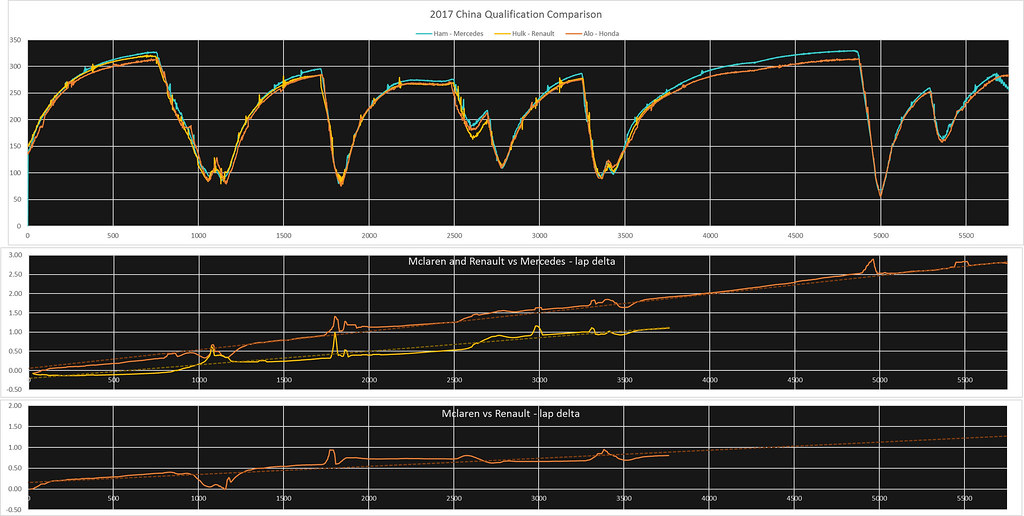I was curious of how different engines are performing in races, so I thought I'd take a look behind the rather simplistic speed trap figures that FIA releases after each race.
What I've basically done is that using the F1 app I have taken the top speed from each team on each lap of the race and calculated an average from that. To make sure that slipstreaming or DRS doesn't affect the results, I've only taken laps where the gap to the car in front is at least 2 seconds.
https://drive.google.com/open?id=0B8Xfq ... Xg3UkdWOXM
The data would suggest that the Mercedes PU has a clear advantage in races. And actually the Ferrari PU would seem to be further behind than in qualifying.
For comparison, here are the speed trap averages from qualifying this season:
1. Force India 320,6 km/h
2. Mercedes 320,5
3. Williams 319,9
4. Ferrari 319,5
5. Haas 316,9
6. Red Bull 316,8
7. Toro Rosso 314,9
8. Renault 314,2
9. Sauber 313,1
10. McLaren 310,6
The race speed traps also shine light on some of the problems Honda are facing. Looking just at the speed trap figures on FIA's documents gives the false impression I sometimes see in internet discussions that they are pretty close to Renault. Looking at their speed lap by lap it becomes clear very quickly that either they are having to save a lot of fuel in the races or their ERS simply runs out of battery power on some tracks. Maybe both. Sometimes they can be 10-20 km/h down on everybody else for some parts of the race.
I don't know. Lies, damned lies, statistics?
- Login or Register
No account yet? Sign up



